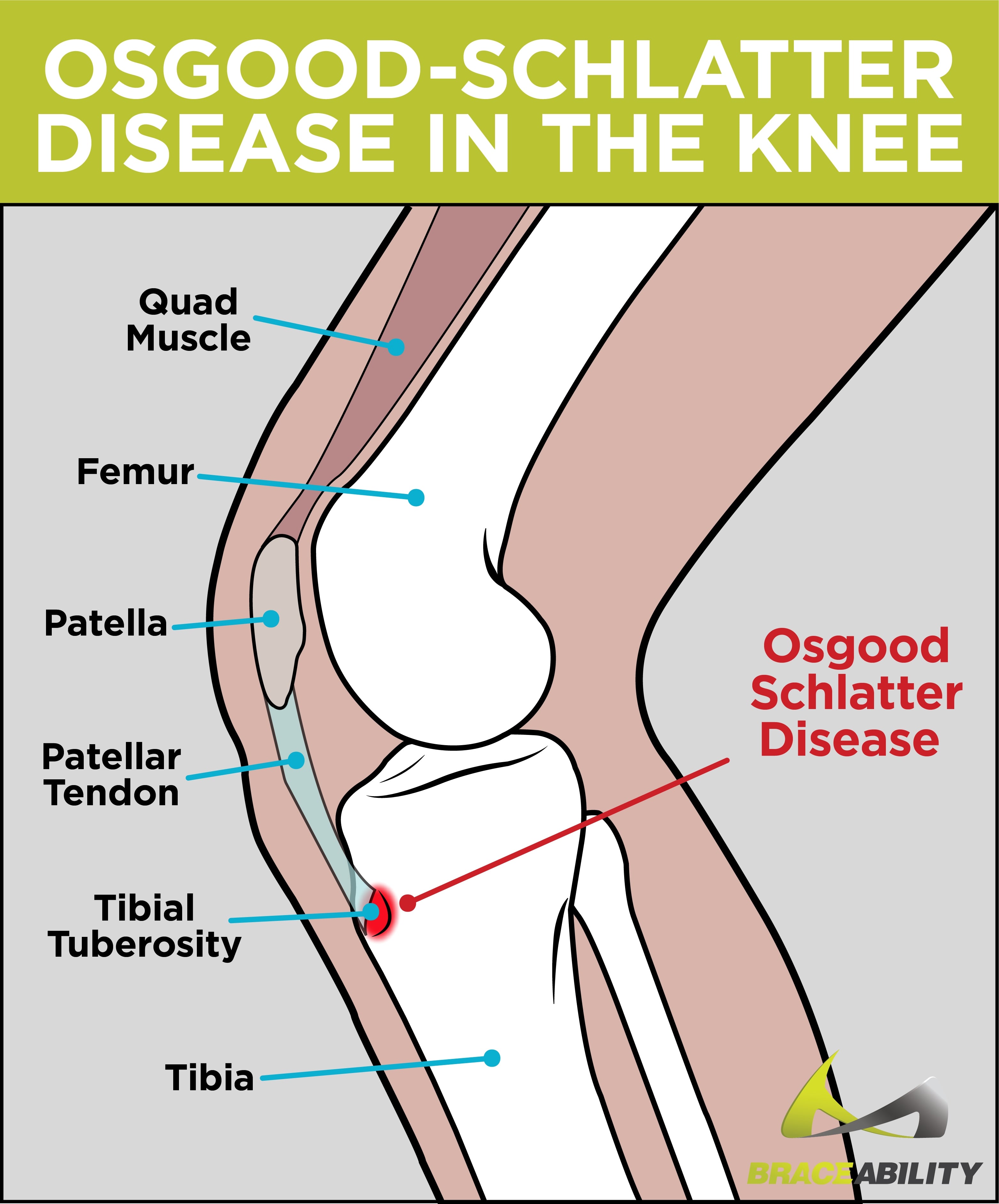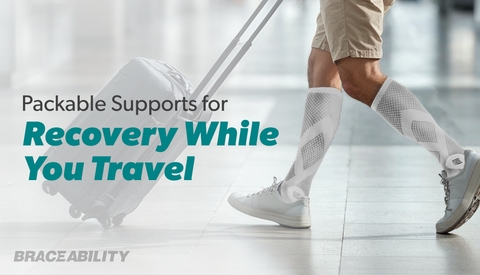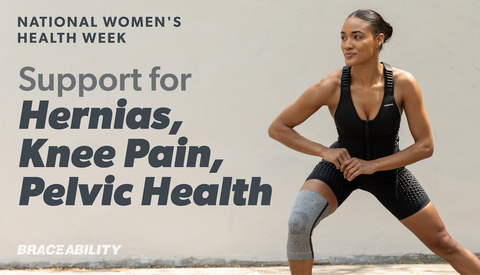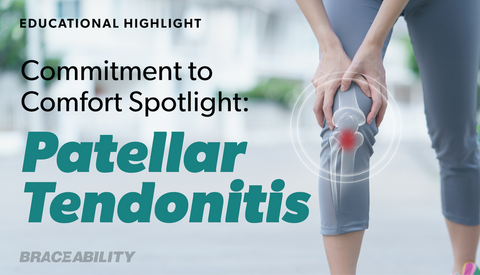Osgood Schlatter Treatment, Exercises, & Surgery
What is Osgood Schlatter Disease?
Osgood-Schlatter disease (OSD) is a growth-related, overuse injury most commonly seen in young adolescents. This disease is characterized by a painful inflammation (bump) located at your child’s tibial tuberosity. Your child’s tibial tuberosity is located about an inch below their kneecap (patella) at the growth plate where their patellar tendon attaches to their shinbone (tibia). This disease can cause local pain, inflammation, swelling, and sometimes calcification. In some children, both knees are affected.
Osgood-Schlatter disease is most common among:
-
Kids going through a growth spurt or puberty
-
Active boys ages 10 to 15 years old
-
Active girls ages 8 to 13 years old
-
Athlete
Osgood Schlatter Knee Disease Symptoms
Signs and symptoms of Osgood-Schlatter Disease include:
-
A bony bump at the top of your child’s shinbone
-
Pain, swelling, and tenderness under your child’s knee
-
Warmth and redness below your child’s knee
-
Increased pain during high-impact activities, such as running, or jumping
-
Limping after physical activities
Levels of pain associated with Osgood-Schlatter disease vary greatly in different people. It depends on the severity of your child’s condition. Some only have mild pain, especially when running or jumping. Whereas, others feel debilitating and chronic pain. Most children are able to recover in a few weeks and return to their normal routine. However, pain can last months and recur until your child is fully grown.
Even after your child’s symptoms have resolved and they have fully grown, sometimes this condition leaves a permanent painless lump below their knee. Usually, this lump doesn’t interfere with your child’s knee function, but it can be present throughout their entire life.
What Causes Osgood Schlatter Knee Disease?
The main cause of Osgood-Schlatter is too much tension on the patellar tendon. The tension can occur from overuse, growth spurts, or abnormal alignment in the legs.
-
Overuse from Sports
During sporting activities, the quadriceps muscle on the front of your child’s thigh works, pulling on their patellar tendon, which in turns pulls on their growth plate (tibial tuberosity). This irritation sometimes results in Osgood-Schlatter disease.
-
Growth Spurts
During growth spurts, your child’s patellar tendon might not be able to keep up with the growth rate of their lower leg. As a result, their patellar tendon ends up being relatively too short, causing their patellar tendon to constantly pull at their growth plate (tibial tuberosity).
The growth plate is weaker and more prone to injury than other parts of their bone. As a result, if tension is too great or occurs too often while your child’s bone is developing, they can experience irritation under their kneecap (patella) during physical stress and overuse. This irritation can result in Osgood-Schlatter syndrome.
-
Abnormal Alignment in Legs
Kids with alignment issues, such as knock-knees or flat feet, have an abnormal angle formed between their quadriceps muscle and their patellar tendon. This angle (Q angle) puts more tension on the growth plate of your child’s tibial tuberosity, increasing their chance of developing Osgood-Schlatter disease.
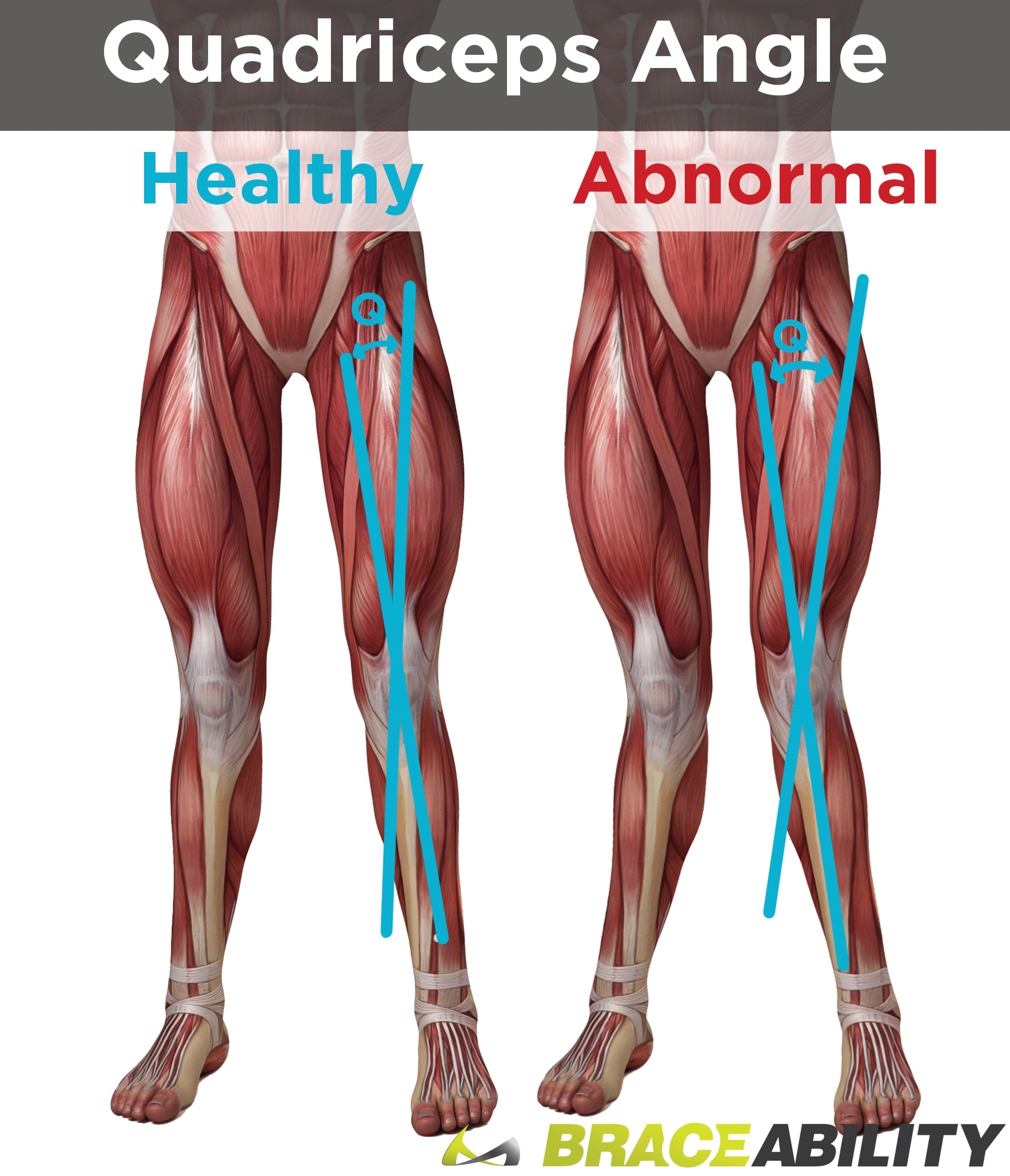
Can Adults get Osgood Schlatter Disease?
The good news is that Osgood-Schlatter disease usually goes away after your child has stopped growing, usually between 14 and 18 years old. Therefore, this disease is rare among adults but not unheard of. Luckily, adults with Osgood-Schlatter disease usually only have one affected knee and don’t experience very much pain.
Don’t worry if you have Osgood-Schlatter disease as an adult, although it is rare, you are not alone. Anybody who had Osgood-Schlatters as a child is more likely to keep getting it as an adult. In fact, about 10% of patients with Osgood-Schlatters continue to experience some symptoms into adulthood. Similar to kids, adults can also get this disease if they participate in repetitive physical activities and sports, including basketball, volleyball, figure skating, etc.
Do you have Osgood-Schlatter disease as an adult? If so, check out the different treatment methods below, which help both children and adults!
Osgood-Schlatter Disease Vs. Patellar Tendonitis
Sometimes Osgood-Schlatter disease is confused with patellar tendonitis among adults and children. In comparison to Osgood-Schlatter disease, patellar tendinitis is an injury to your patellar tendon, the tissue connecting your knee to your shinbone. Pain associated with patellar tendonitis is located slightly higher than Osgood-Schlatter disease, instead of where your patellar tendon connects to your shinbone.
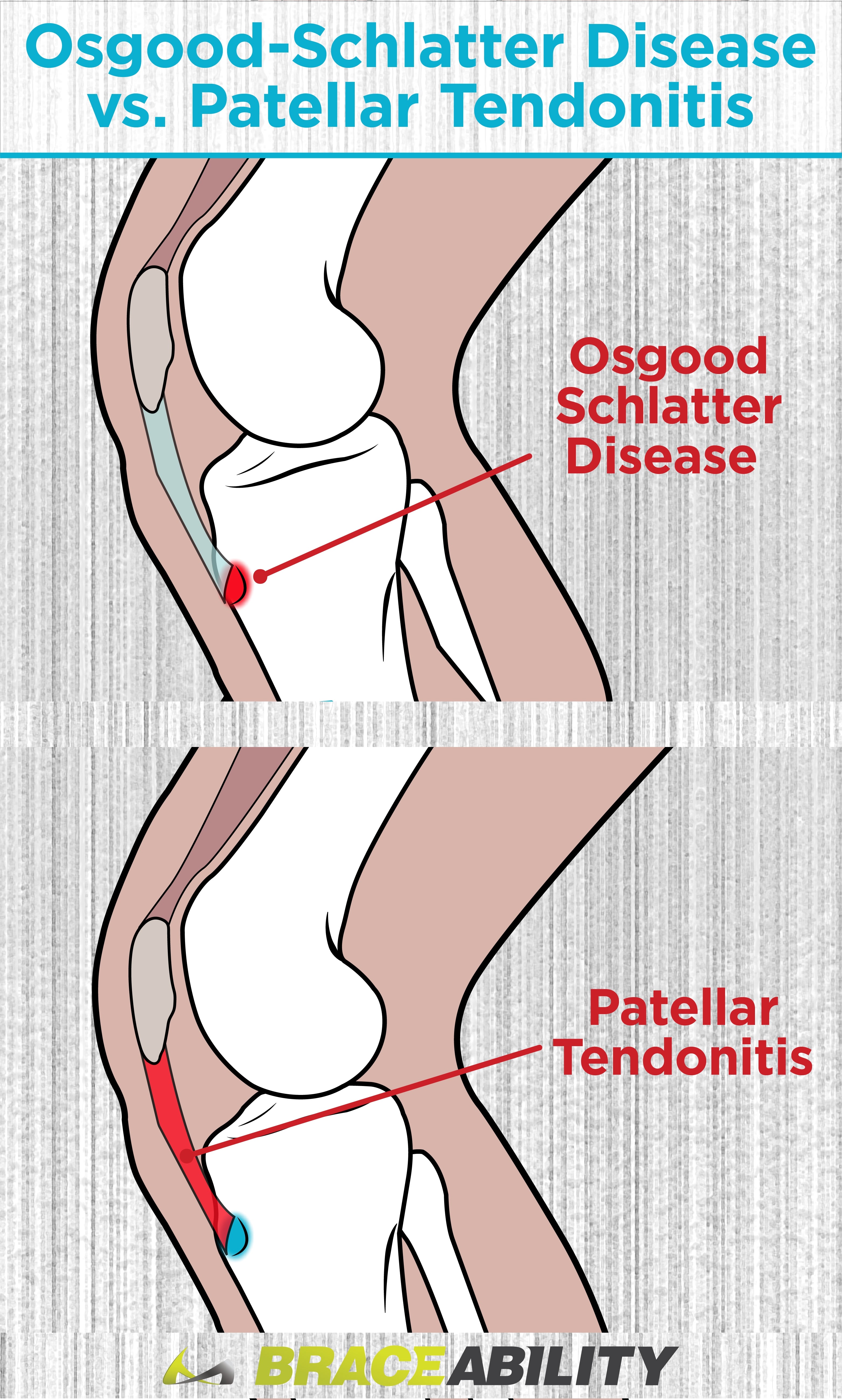
The 6 Best Treatments for Osgood Schlatter Disease
Although the Osgood-Schlatter disease will usually cure itself once your child has stopped growing, there are several things that can be done to treat your child’s symptoms in the meantime. After all, growth spurts during puberty are difficult enough without Osgood-Schlatter disease. Treatments for Osgood-Schlatter Disease focus on reducing swelling and other painful symptoms.
-
Rest and Time
Have your child follow the R.I.C.E. treatment plan to eliminate irritation and manage pain associated with Osgood-Schlatter disease. Rest is probably the most important thing your son or daughter can do to treat Osgood-Schlatter disease.
Have your child cut back on weight-bearing activities and put a cold compress on their knee to help bring their inflammation down. Have your child do this about 3 times each day for 10 to 15 minutes each time. A bag of frozen vegetables or BraceAbility’s cold compression knee brace works great.
-
Anti-Inflammatory Medications
Over-the-counter anti-inflammatory drugs (NSAIDs), such as ibuprofen, are helpful for reducing painful symptoms and inflammation caused by Osgood-Schlatter disease. Although anti-inflammatory medications have not proven to shorten the course of Osgood-Schlatters disease, they do help alleviate painful symptoms.
-
Exercises and Stretches Osgood Schlatter Disease
Stretching and strengthening exercises for Osgood-Schlatter disease can provide pain relief and keep your child’s legs strong. These exercises focus on strengthening your child’s quadriceps and hamstring muscles. Exercises can also help reduce extra tension on your child’s tendons. Your child’s doctor or physical therapist can help create and supervise their strengthening program.
Exercises for Osgood-Schlatter disease can also help prevent the following conditions:
-
Braces for Osgood Schlatter Disease
A knee brace is extremely helpful if you or your child are unable to refrain from pain-producing activities and could benefit from some extra stability. Thankfully, BraceAbility has a number of knee supports to help manage Osgood-Schlatters disease, including braces, straps, and knee sleeves for children AND adults. Wearing a brace can help your child get back to playing soccer, basketball, running, skating, or climbing stairs without pain.
-
Kinesio Taping
Similar to braces and supports, kinesio taping for Osgood-Schlatter disease helps with knee stability and pain management.
-
Physical Therapy (Physiotherapy)
Your child’s physical therapist can help create and supervise a treatment plan, including a strengthening program to treat Osgood-Schlatter disease. Once your child’s symptoms have decreased, therapists typically work on sport specific activities and movement patterns, in order to improve your child’s form and reduce knee strain in the future.
Can You Get Surgery for Osgood Schlatter Disease?
Although you can get surgery for Osgood-Schlatter disease, it is rarely helpful or necessary, especially among children. This is because Osgood-Schlatters disease almost always only affects children while they are still growing, and it normally goes away with just a little time and rest.
Once your child’s cartilage growth plate stops growing, that area of their knee will fill in with bone, instead of cartilage. Therefore, your child’s bone will see the stress and irritation from movement, not their patellar tendon or cartilage, which is the cause of your child’s pain and swelling. Due to this, once your child stops growing, the area below their knee will heal and their pain will go away.
In extreme cases, surgery may be used to get rid of Osgood-Schlatter disease in adults with recurrent symptoms. The primary purpose of surgery is to remove the bone fragments that are causing irritation on your or your child’s tendon. By removing the bone fragments, your or your child’s knee can function fully without pain from Osgood-Schlatter disease.
Treating your or your child’s knee by resting, icing, and bracing are much cheaper options and can be more effective than surgery. Using these more conservative measures usually prevents surgery from being needed at all.
Osgood Schlatter Surgery Recovery Time
If conservative treatment options fail and you need Osgood-Schlatter surgery, you or your child can expect to use crutches and be in a cast for several weeks. After your or your child’s cast is taken off, rehabilitation stretches and exercises will need to be done daily to help your or your child’s knee regain its strength and range of motion. With the proper rehabilitation regimen and surgery, you or your child can expect to be fully functioning and pain-free in a matter of months.
Surgery for Osgood-Schlatter disease can help patients get back on their feet, but there can be side effects to this operation. One side effect of the surgery is a problem with circulation below the knees. Normally, this is a short-term problem and regular blood flow will return fairly quickly.
Top 3 Osgood Schlatter Disease Prevention Methods
-
Proper Warm-Up
Proper warm-up techniques will help prepare your child’s muscles and tendons for physical activity and increase the flexibility of their patellar tendon. Warmer tendons are more flexible tendons.
-
Stretch
Regular stretching can help counteract lower-extremity inflexibility that commonly occurs during periods of rapid growth in children and adolescents. Stretching is essential to prevent Osgood-Schlatters and other lower extremity overuse syndromes. Make sure your child stretches before and after participation in sports or other physically exerting activities. Also, have your child gradually increase the intensity and duration of athletic activities, which helps prevent Osgood-Schlatter disease.
Make sure your child stretches the following muscle groups:
-
Quadriceps
-
Hamstrings
-
Iliotibial band
-
Limit Exercise
It is possible to prevent Osgood-Schlatter disease by limiting stressful activities involving your child’s knees, such as basketball, volleyball, ballet, gymnastics, high jump, etc. In most children, Osgood-Schlatter disease goes away on its own with a little rest and time. If your child ignores or plays through the pain, the disease may get worse and not heal very well. To prevent Osgood-Schlatter disease, make sure your child takes short breaks from exercise every once in awhile.








